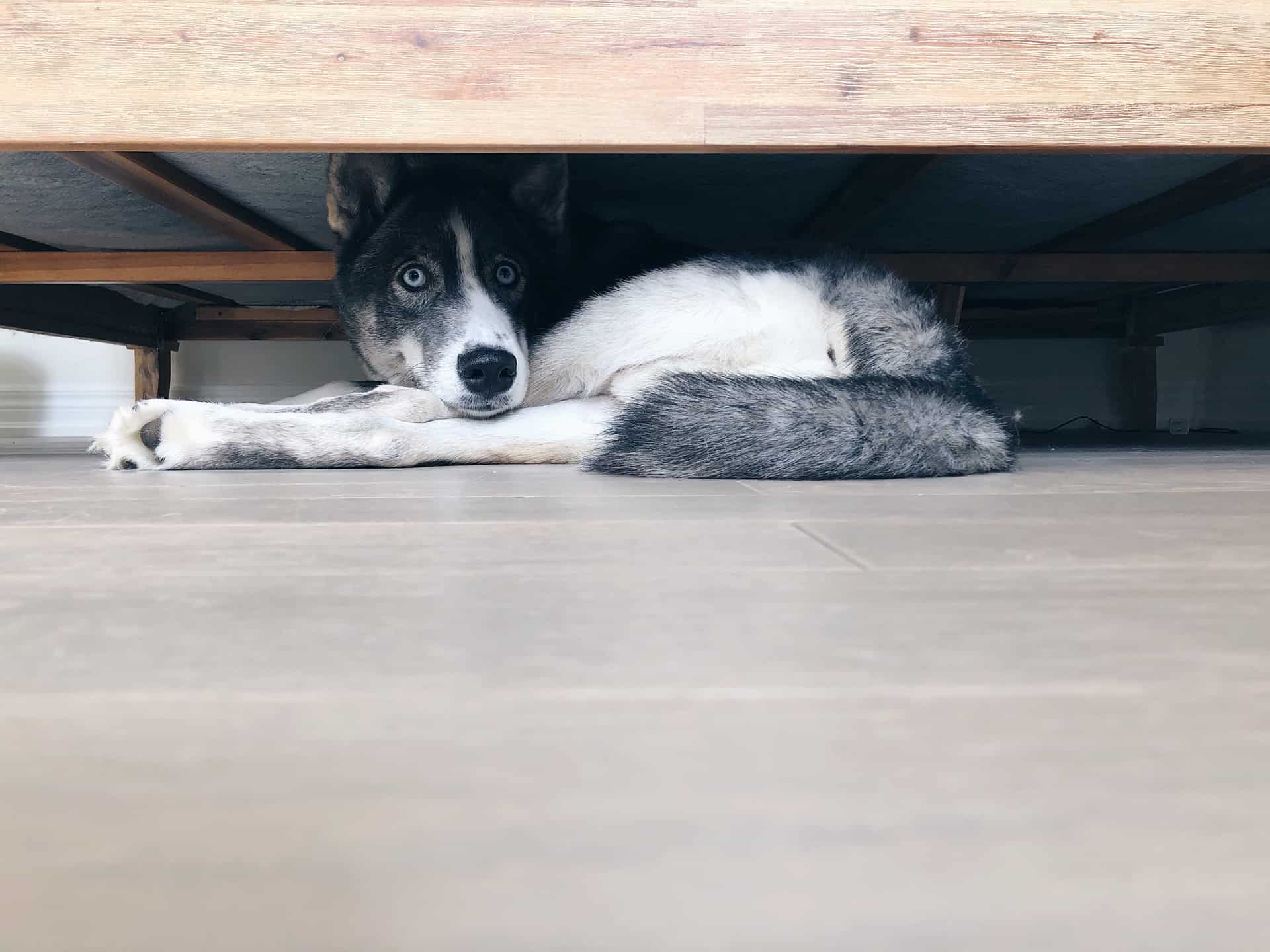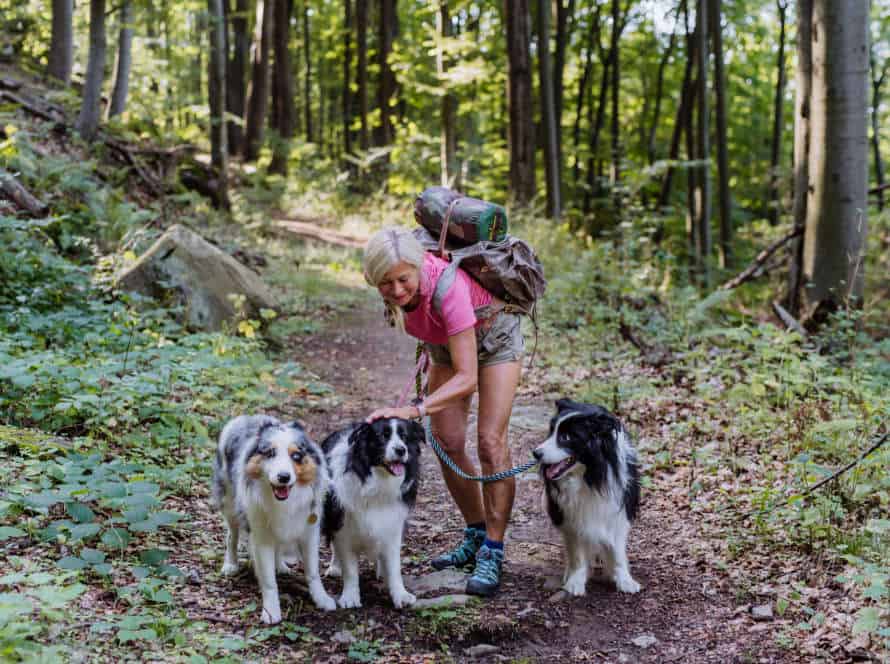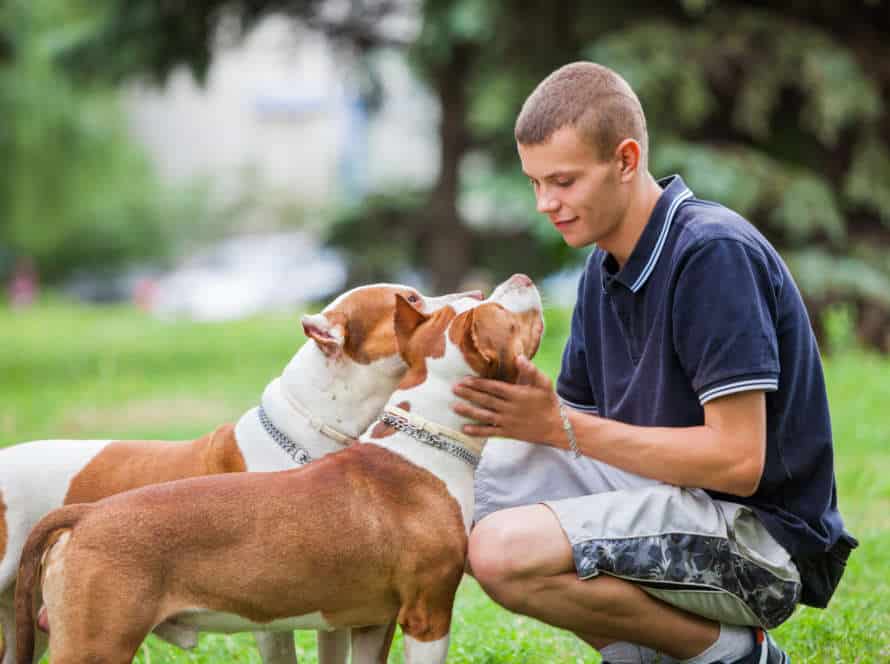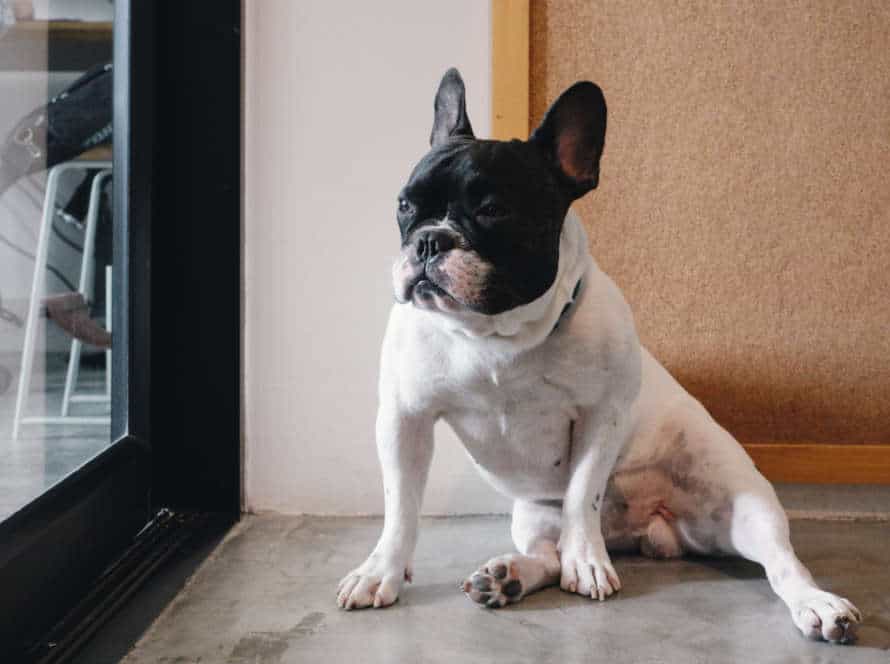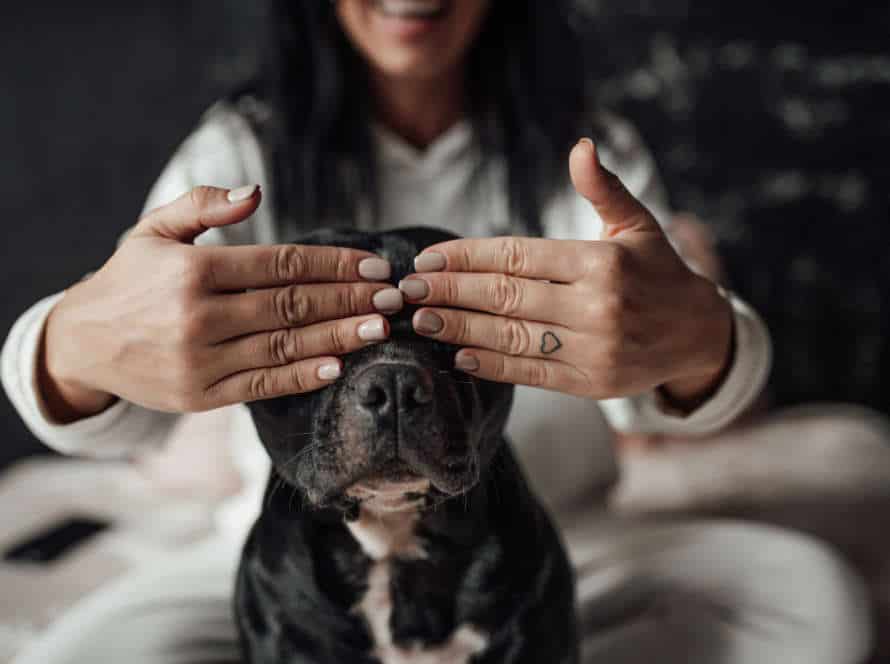Understanding the Root Causes of Fear in Dogs
Dogs can feel scared in various situations and when exposed to certain triggers. Knowing the source of their fear can help you resolve it properly. Common reasons why dogs might be afraid include:
- Not having enough socialization: Dogs that haven’t been exposed to enough new people, animals, or activities may be scared of them.
- Suffering trauma or a bad experience: If a dog has gone through abuse or a traumatic event, they can display fear and anxiety.
- Genetics: Some breeds are genetically more scared than others.
- Health issues: It’s possible that health issues like pain, hearing loss, or vision problems could be causing the fear.
To handle your pup’s fear, the first step is to figure out the cause. Then, you should work with a professional trainer or behaviour specialist to create an appropriate plan.
Understanding Fear in Dogs
Fear is a normal feeling for humans and animals. Dogs respond to it differently. To know why, it’s good to look at the source of their fear. This article explores the various causes and how to help your dog manage his fear.
What is fear and anxiety in dogs?
Fear and anxiety are two common emotions felt by dogs. Fear is a response to an immediate danger, while anxiety lingers as unease and worry.
Getting to the root of fear and anxiety in dogs can assist pet owners in meeting their pet’s emotional needs and avoiding behavioral issues. Possible causes of fear and anxiety in dogs include:
- Poor socialization – Not being exposed to different people, animals, and environments as a pup can lead to fear and anxiety issues later.
- Traumatic experiences – Events like abuse, neglect, or a car accident can induce long-term fear and anxiety.
- Genetics – Certain breeds of dogs are more prone to these issues due to their genes.
- Illness or pain – Dogs with medical issues or chronic pain may show signs of fear and anxiety.
By understanding the causes of fear and anxiety, pet owners can provide their furry friends with the care and attention they need to live happily and healthily.
What are the signs of fear in dogs?
Dogs can show different kinds of signs when they are scared or worried. It is essential to recognize them, as this will help you understand what your dog is feeling and why.
Common signs of fear in dogs include:
- Trembling or shaking.
- Whining or whimpering.
- Panting or shallow breathing.
- Cowering or hiding.
- Growling or barking.
- Pacing or restlessness.
- Loss of appetite.
- Excessive licking or grooming.
To prevent fear from occurring again, it is important to identify its causes. These can include past trauma or abuse, lack of socialization, loud sounds, new people or environments, and health problems. If you observe any of these signs of fear in your dog, make sure to create a secure and comforting atmosphere and, if necessary, ask for help from a vet or dog trainer.
What causes fear and anxiety in dogs?
Fear and anxiety in dogs can be caused by a few things. It’s important to know the cause so you can help your pup. Here are the most common triggers:
- Not enough socialization. Dogs who haven’t been around different places, people, and animals can be prone to fear and anxiety.
- Traumatic events. Accidents, abuse, or disasters can leave dogs traumatized and anxious.
- Noise phobia. Loud or sudden noises like fireworks, thunder, or construction can make dogs panic.
- Separation anxiety. Dogs become stressed when away from their owners. This can lead to destruction, barking, or refusing to eat and drink.
Knowing the reason for your dog’s fear and anxiety will help you give them the best training and support to get over it.
Common Causes of Fear in Dogs
Fear in dogs is common. Loud noises, unfamiliar people and environments, and physical discomfort often trigger it. Let’s discuss some common causes of fear in dogs. Also, how to help them cope with it? Noise, strangers and strange places, physical pain – these are all common sources of fear in doggies. Let’s find out how to support them and make them feel safe.
Lack of Socialization
A lack of socialization at an early age is a cause of fear in dogs. Without it, dogs can become scared of people, other animals, and new experiences.
Why is socialization so important? Puppies have a critical socialization period between 3 and 14 weeks of age. During this time, they need to be exposed to people, other animals, different environments, sounds, and smells. Doing so teaches them these experiences are safe and positive.
Puppies that miss this period can become scared of unfamiliar situations. This can lead to fear-based aggression, territorial behavior, and separation anxiety.
To prevent a lack of socialization, take your puppy to puppy classes, have them meet vaccinated adult dogs and people, and expose them to different environments and experiences from a young age.
Pro Tip: Socializing your puppy is an ongoing process. Keep exposing them to new experiences and situations as they grow to keep them confident and well-adjusted.
How early socialization can prevent fear in dogs?
Socialization is essential for stopping fear in dogs. Early socialization introduces puppies to new people, dogs, environments, and sounds. This helps them feel more relaxed and confident in different scenarios.
What causes fear in dogs? It could be due to past traumatic experiences, sickness, or genetics. Living with a scared dog is tough for pet owners. It can result in anxiety, destructive behavior, and aggression.
As a dog owner, make sure your pup has a secure and positive environment. Consult a professional trainer or behaviorist to help rehabilitate a fearful dog.
Steps to socialize dogs effectively
Socializing dogs needs two key things: exposure and positive reinforcement.
Exposure: Introduce your dog to new people, animals and places slowly. Start with brief and controlled meetings. Gradually increase the exposure as your dog gets more relaxed.
Positive reinforcement: Reward your dog’s good behaviour with treats, praise and cuddles. Doing this will make your dog associate socialization with happy feelings.
It is also important to understand why dogs are scared. Common reasons are: lack of socializing, traumatic events, breeding and medical issues. By tackling the fear’s source, you can help your pup overcome their worries and learn how to be sociable and confident.
Traumatic Experience
Trauma can lead a dog to fear certain things. But, there are other causes of fear in dogs. Understanding these causes can help address the fear and anxiety.
Common causes:
- Not enough socialization between 3-14 weeks old.
- Negative experiences with people, animals, or objects.
- Illness or physical discomfort.
- Genetics.
Know the cause to understand how to help. Expert help is necessary. A professional trainer or behaviorist will develop a plan to address the fears.
Examples of traumatic experiences in dogs
Experiences that are traumatic for dogs can cause behavioral problems, fear, and anxiety. Here are some kinds of traumatic events that can affect dogs:
- When owners or other animals physically mistreat or abuse them. This can lead to aggression, anxiety, and fear.
- Being neglected or abandoned. This may cause separation anxiety, trust issues, and fear of solitude.
- Loud noises like thunder, fireworks, or gunshots can be startling to dogs and cause fear or anxiety.
- If a dog has been in a car accident, it can make them afraid of car travel or show signs of PTSD.
- Changes like moving homes, new family members and pets, or changes in routine can distress dogs and cause fear and anxiety.
It is important for owners to figure out the cause of their dogs’ fear, in order to help them overcome their trauma and lead a happy and healthy life.
Understanding and managing PTSD in dogs
PTSD in dogs is caused by trauma, chronic stress, or extreme fear. It’s important to understand what causes fear in dogs. Common causes are: lack of socialization, genetics, past experiences, neglect, abuse, and medical conditions.
Working with a vet or behavioral expert is key to managing symptoms. Some helpful tips are: creating a safe environment, providing exercise and stimulation, using positive reinforcement training, and seeking professional help.
If you spot signs of fear or anxiety, take action. This could be excessive barking, panting, or aggression. Help your pup feel safe and secure!
Genetic Predisposition
Genetic predisposition is a cause of fear in dogs. Genetics affects a dog’s behavior and temperament. Dogs with a nervous or anxious temperament may experience fear and anxiety in difficult situations.
Here are some signs that may mean your dog is predisposed to fear:
- Sensitive to sound.
- Easily startled.
- Fearful of new places or people.
- Tends to be shy in social settings.
If your dog displays these behaviors, it is necessary to get help from a specialist. With proper training and support, you can help your pup overcome their fears and have a great life!
Breeds prone to fear and anxiety disorders
Certain dog breeds are more likely to experience fear and anxiety than others. This could be due to both genetics and environmental factors.
Here are some pups that are more likely to have these disorders:
- Border Collies – these high-energy dogs often have OCD and separation anxiety.
- Greyhounds – retired from racing, they can suffer trauma or lack of socialization, leading to fear and anxiety.
- Cavalier King Charles Spaniels – affectionate and gentle, but can have separation anxiety.
- German Shepherds – intelligent and loyal, but can also develop anxiety if not socialized or have experienced trauma.
If you own a pup, make sure to know the signs of fear and anxiety and seek professional help if needed.
How genetics influence fear in dogs?
Genetics have a major impact on why some dogs are more fearful than others. Certain breeds, like the Bernese Mountain Dog, German Shepherd, and Cavalier King Charles Spaniel are more likely to be anxious or scared.
A new study suggests that a gene variation, called CNR1, can make a dog more prone to fear and anxiety. This gene regulates the endocannabinoid system of a dog, which affects their mood and anxiety levels.
Environment also influences how fearful a dog is. Socialization, traumatic experiences, and a stressful living environment all add to a dog’s fear.
As a dog owner, it’s important to recognize the reasons for fear in dogs. You should also take action to make them feel safe and secure. Seeking help from a certified dog behaviourist is recommended if your pup is anxious or scared. They will evaluate your dog and create a plan to address any issues.
Pain or Medical Conditions
Pain or medical issues can be the root of fear for dogs. As a pet owner, it’s vital to understand common causes of fear so your pup can overcome their stress and lead a content life.
The following are some common medical issues that can cause fear in dogs:
- Dental pain can cause fear when their mouth is touched or opened.
- Joint pain due to arthritis can make them scared to do certain activities.
- Hypothyroidism can cause anxiety, fear and aggression.
- Health problems such as heart disease, diabetes or cancer may also lead to fear in dogs.
If you think your dog is fearful due to an underlying medical condition or pain, it’s best to consult your vet. This will ensure proper treatment and care.
How chronic pain can cause fear in dogs?
Chronic pain can make dogs fearful. The discomfort and unknownness of the condition can distress them. If a pup is hurting, it may begin to link pain to certain folks, places, or things. Or, it could become unresponsive and uptight.
Here are some usual signs of chronic pain in canines:
- limping
- sluggishness
- grumpiness
- alternations in appetite/sleeping
- increased sensitivity to sound/touch
To help with your pup’s chronic pain, talk to your vet to generate a personalized plan. This could include medicinal remedies, diet or exercise difference, or other treatments. On top of that, creating a comfortable and safe environment will help to soothe your dog’s anxieties.
Medical conditions that can cause fear and anxiety in dogs
Fear and anxiety in dogs can have many causes. Knowing why a dog is fearful is very important to help them. Here are 2 medical issues that can lead to fear and anxiety:
- Hypothyroidism: If your pup has fearfulness, shaking, or trembling, it can be from an underactive thyroid. A blood test can find this, and it can be managed with medicine.
- Ear Infections: Painful ear infections can cause fear and anxiety. Look for scratching and head shaking, which may mean an ear infection. Go to the vet for antibiotics right away.
Figuring out what is wrong and treating it can improve your pup’s health and reduce their fear and anxiety.
Dealing with Fear in Dogs
Fear in dogs may be caused by many things. It could be a change of environment or routine, or an upsetting experience. To treat this fear, it is essential to identify the cause. To do this, watch your pup and pay attention to its behaviour.
Here, we will look at common causes of fear in dogs, and how to address them.
Understanding your dog’s triggers and fears
Gaining insight into your pup’s triggers and fears is necessary to tackle their fear. Triggers can be anything that makes your dog anxious or scared, like particular sights, sounds, or situations. The cause of your pup’s fear could be a mix of genetics, past experiences, and surroundings. When you can identify their triggers and fears, you can make a plan to help them. Strategies like desensitization, counterconditioning, and behaviour modification can be used. Remember to be patient, dependable, and kind with your pooch as they learn to conquer their fear.
Tip: Seek help from a vet or dog behaviour specialist if your pup’s fear is intense or lasts a long time.
Desensitization and Counterconditioning Techniques
Desensitization and counterconditioning are two methods commonly utilized to handle fear in dogs. Desensitization consists of slowly introducing a scared dog to whatever stimulus causes fear. Counterconditioning switches the negative response to the stimulus, with a positive one.
Here’s how to use them:
- Recognize the source of your dog’s fear and figure out a safe distance from it.
- Step by step show your dog the stimulus at a distance, using treats or other positive reinforcement to make a positive association.
- Increase the exposure gradually in time, getting nearer to the stimulus as your dog becomes more relaxed.
- Consistency is key – do the process daily and boost the exposure at a pace that is comfortable for your pooch.
While these techniques can be effective, the first step is to understand the root causes of your dog’s fear. You may need to work with a trainer or behaviorist to come up with a tailored approach.
How to gradually expose dogs to their fears?
Gradually exposing dogs to their fears is a good way to help them get over anxieties. Here are some tips to guide you:
- Identify what your dog is scared of – Loud sounds, strange objects, and new people can cause fear in dogs.
- Find a safe place – Give your pup a safe spot like a crate or a room they know, when they’re feeling worried.
- Start off slow – Begin by showing your pup the thing they’re scared of, but from far away. Move closer as they become more relaxed.
- Be encouraging – Give treats and praise when they show progress or stay calm.
- Be patient – It can take a while to get over fear, so be consistent and don’t rush it.
Creating positive associations with fear-inducing stimuli
Altering a dog’s emotional response to potential triggers can be achieved through creating positive associations with fear-inducing stimuli. To do this, you should:
- Figure out the specific triggers that make your pup fearful.
- Expose your dog to the trigger in a gradual, controlled way.
- Give treats and praise as your dog is exposed to the trigger, to make a positive association.
- Repeat this process with various triggers.
It’s important to remember that this technique requires patience and consistency. With repeated exposure and reinforcement, you can see a reduction in the dog’s fear response.
Medications and Therapies
Various medications and therapies are available to help dogs with fear and anxiety. But, first it’s important to know the cause of the fear. Here are some treatments and meds:
- Medications like fluoxetine and clomipramine can help. Speak to a vet before giving them.
- Behavioral therapy is good too. It looks at the root cause of the fear and helps the pup deal with it.
- Natural remedies such as CBD oil, chamomile, and lavender can also help. However, use these only after talking to a vet.
With patience, consistency, and the right plan, it’s possible to help your pup cope with fear and anxiety.
Different types of medications and their effects on dogs
Dogs need different types of meds, depending on their health and behaviour. It’s vital to know the effects of these medications, so your pup stays safe and happy.
Here are some common drugs for doggos:
- Anti-inflammatories – Reduces pain and inflammation. Eg. arthritis. Can cause vomiting, diarrhea, and stomach ulcers.
- Antibiotics – Treats bacterial infections. Side effects: allergies, vomiting, diarrhea.
- Antidepressants – For separation anxiety and other behavioural issues. Side effects: vomiting, diarrhea, lethargy.
- Anti-anxiety meds – Reduces stress and anxiety. Drowsiness, loss of coordination, confusion can result.
Work with your vet to come up with the best plan for your pooch!
Herbal remedies and other alternative therapies for fear in dogs.
Dealing with fear in dogs needs understanding what causes it. Herbal remedies & alternative therapies may help.
Root Causes:
- Socialization lacking
- Trauma/abuse
- Genetics
- Health problems
- Environment
Herbal Remedies & Alternative Therapies:
- Chamomile – can be mixed in food or sprayed on
- Lavender oil – diffused or sprayed on collar
- Valerian root – mixed with food or sprayed
- Acupuncture – thin needles stimulating body
- Massage therapy – relax muscles, reduce anxiety
- Behavioral training – desensitize to triggers
Always talk to the vet for advice before trying anything.
Pro Tip: Medication, training & alternative therapies can help dogs with long-term fear & anxiety.
Frequently Asked Questions
Q: Why do dogs experience fear?
A: Dogs experience fear due to a variety of reasons including past trauma or abuse, lack of socialization, and genetics.
Q: How can I tell if my dog is fearful?
A: Signs of fear in dogs include shaking, panting, cowering, excessive barking, and hiding.
Q: Can fear in dogs be treated?
A: Yes, fear in dogs can be treated through various methods such as desensitization, counter-conditioning, and medication.
Q: Is punishment an effective way to handle fear in dogs?
A: No, punishment can actually worsen a dog’s fear and anxiety. Positive reinforcement and patience are more effective methods.
Q: How can I prevent fear in my dog?
A: Proper socialization, training, and positive experiences can help prevent fear in dogs.
Q: When should I seek professional help for my dog’s fear?
A: It is best to seek professional help if your dog’s fear is severe and interfering with their daily life or if you are unsure how to properly address their fear.

